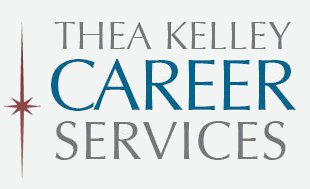 Whether you’re writing a resume or answering an interview question, it all comes down to this: how to convince employers to hire you. And you’re not going to do it by hanging a sign on yourself like the illustration in this post.
Whether you’re writing a resume or answering an interview question, it all comes down to this: how to convince employers to hire you. And you’re not going to do it by hanging a sign on yourself like the illustration in this post.
Yet in essence, that’s what job seekers sometimes do: make a lot of vague claims that aren’t immediately and obviously supported by evidence. So why would an employer believe them?
For example, here are some statements we might see in a resume summary:
- Energetic professional with 10 years of successful experience.
- Creative and data-driven, with outstanding problem-solving skills.
- Proven ability to influence without authority and support cross-functional teams.
- Known for thought leadership and innovation.
- Exceptional interpersonal and communication skills.
What’s wrong with this language? Only that the recruiter or hiring manager reading it has no particular reason to believe any of it. The paragraph makes a dozen claims and most of them just look like opinions–the job seeker’s own biased opinions about himself. Where’s the evidence?
Maybe, further down in the resume, there may be facts that support these claims. But at the time the employer reads the summary, they’re unconvinced. Their eyes slide right over the words.
What’s the solution?
Back up your claims with facts or evidence. You don’t even have to do this for every single statement. Supporting half of your claims with facts and evidence will make the whole resume or interview answer more credible.
How do you offer evidence? Here’s an example. The first bullet item above contains a fact: 10 years of experience. So far so good, but “energetic” and “successful” look like opinions. One way to support those opinions is this. Let’s say those 10 years have included advancement that’s visible in your job titles and descriptions. That being the case, replace “successful” with the more factual “progressively responsible.” A quick glance at the experience section will verify that the job seeker has moved up the ladder: strong evidence of success. Now the term “energetic” becomes more believable, as well. After all, it takes energy to move up in one’s career.
Other bullet items above could be replaced with brief mentions of accomplishments that demonstrate rather than claim. For example, “Known for thought leadership and innovation” could be replaced with a mention of speaking at conferences and/or having patents.
Now that you understand how to convince employers to hire you by backing up your claims, do this: Count the number of claims you make in your resume–or in your answer to interview questions like “What are your greatest strengths?” Then figure out how to rephrase at least half of those claims to include measurable facts, quantities, stories and/or social proof such as LinkedIn recommendations–in other words, evidence. Your communications will be much more convincing.

